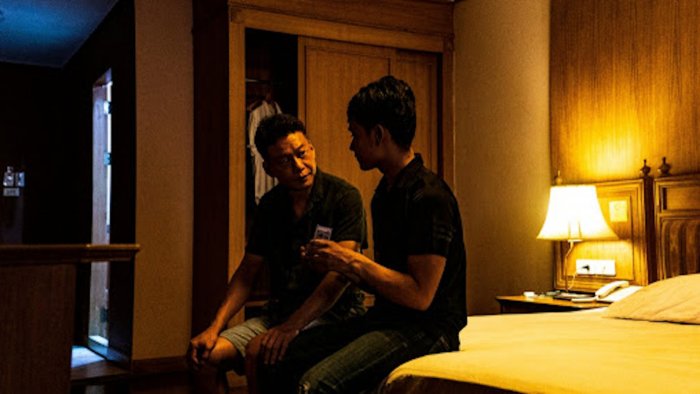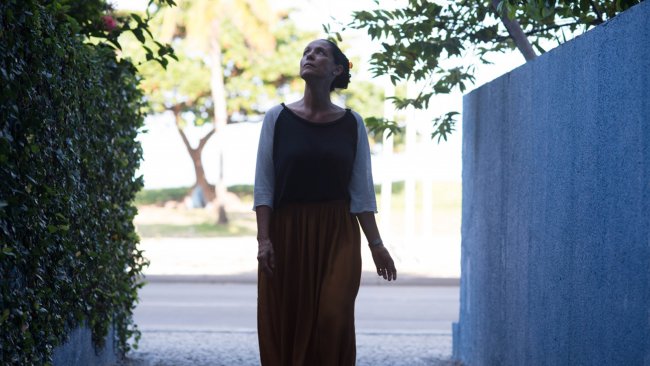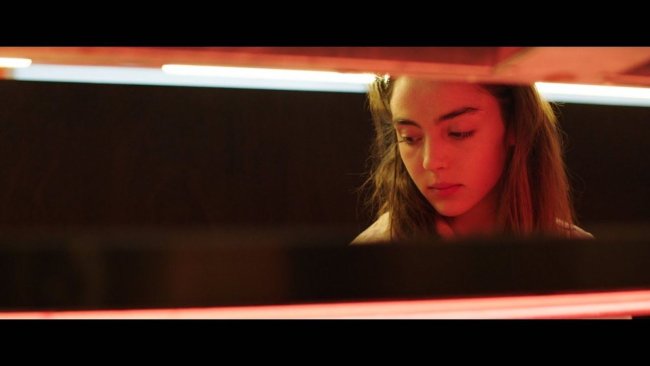Days
[…] I left those scenes with a sense of awakening, just as I left Jeanne Dielmann, to the intricacies of life.
[…] You might ask how could such uniqueness of experience, such as the experience of living with chronic pain, ever be depicted. What if it can’t? What does this mean for the viewer? Perhaps we have to contribute something to the film in order to believe it.
Text: Laura Davis

In Days we see Tsai Ming-Liang’s characteristic slow and silent cinema, long static shots that require the audience slow down and ease into the shot. His characters feel out of place in bustling urban landscapes. He does not seek out bodies in a crowd but souls in isolation, exploits and subverts preconceptions of dramatic tension by replacing metropolitan montage with minimalism. He avoids subtitles. The moment of connection is non-verbal, more figurative.
Depicted is Kang (Lee Kang-sheng) and Non (Anong Houngheuangsy, a Laotian immigrant to Thailand in his first film role). Lee Kang-sheng suffered a stroke a few years ago and has been experiencing ongoing neck pain since he was a teenager. Every motion is considered and reconsidered for Lee and Tsai Ming-Liang’s camera is attentive to this. I am lucky not to live with pain but I imagine it must feel like living on another planet where the pull of gravity is twice as strong. The film takes us through this experience: structured through a focus on Kang and Non as separate, then together, then separate once more. One is there to relieve the other of pain for a moment. The other seems to go about their daily rituals, boiling water in a pot on hot coals, preparing vegetables in fresh water and eating pieces of food slowly.
The film, to me, is about these energy transfers and how sustenance is interconnected. Tsai Ming-Liang’s rural Malaysian upbringing placed the emphasis on this slowness: «The main benefit I got from having lived there, in Kuching, for that period» he has said, «was the very slow pace of life, giving me time to develop my interests and enjoy myself». The processes of daily routine have been so optimised for me that I rarely spend so long cooking, but what does it mean for the audience to participate vicariously in this ritual? It is not our appetite that is satisfied but our curiosity. I left those scenes with a sense of awakening, just as I left Jeanne Dielmann, to the intricacies of life. We must see the realism of daily chores to understand this character’s life. We are very present in the moments of these scenes.
For the first half of the film there are not individuals in isolation but a symbiotic process between character and audience. We too witness Kang’s suffering as it comes and is eventually relieved. The moment of relief is signalled by a groan. We understand it is not scripted or acted but witnessed. This is followed up with a music box given in return for the alleviation of pain. During the symbolic finale we hear it sing out in the street as best it can without being drowned out by urban background noise.
You might ask how could such uniqueness of experience, such as the experience of living with chronic pain, ever be depicted. What if it can’t? What does this mean for the viewer? Perhaps we have to contribute something to the film in order to believe it. We cannot be as certain over what is embodied but we can for that which is disembodied. What are we trying to believe in anyway? We must be patient. Boredom will transform into curiosity, and then we will find out.
This article contains a third-party video. If you would like to watch the video, please adjust your settings.
Info
Days | Film | Tsai Ming-Liang | TWN 2020 | 127’ | Black Movie Genève 2021, Locarno Film Festival 2023, Black Movie Genève 2024
First published: January 25, 2021



